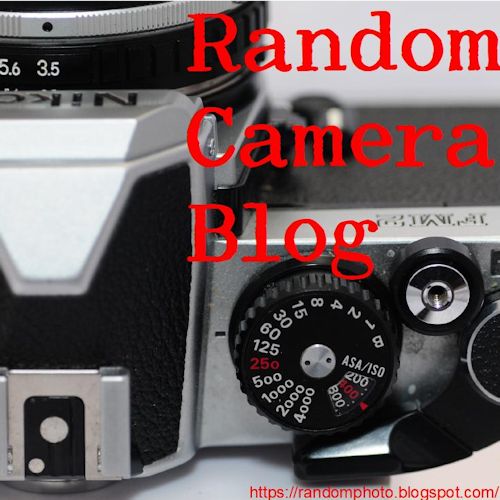 |
| The OG Signet - Signet 35 |
Kodak's line of Signet-branded cameras began in 1951 with the introduction of the Signet 35, which replaced the ugly as hell Kodak 35 camera. The Signet 35 was a stylish camera, with a nice 44mm f/3.5 Ektanar lens ins a Synchro 300 shutter. Compared to the Argus C3, the Signet 35 was far superior in aesthetics, size, and ease of use. The only drawback of the Signet 35 was the tiny viewfinder. It was a true rangefinder focus camera, and its compactness was its strength. However, over time many examples of the Signet 35 have sticky shutters. As do many lens-shutter cameras from over 60 years ago!
The follow-up camera, the Signet 40 (https://randomphoto.blogspot.com/2022/12/kodaks-signet-40-camera.html) appeared in 1956, with a more Art Moderne style, an Ektanon 44mm f/3.5 lens and a maximum shutter speed of 1/400 sec. I think it's one of Kodak's most beautiful 35mm cameras. The rangefinder patch is easy to see, and the camera is a real joy to use.
 |
| The Signet 50 |
The Signet 30 and Signet 50, introduced in 1957, feature a bottom-mounted film advance lever (single-stroke), A Kodak 44mm f/2.8 Ektanar lens, a bright-frame viewfinder, and alas, no rangefinder. Quite different in appearance from the earlier models, they have that late 1950s "modern" design. The body is largely Bakelite with aluminum fittings. Both cameras use Exposure Values to set the shutter speeds/apertures. The Signet 30 lacks any meter, but the Signet 50 does have a Selenium meter. The biggest change may be that the shutter is internally cocked (only when film is loaded) when you advance the film. Earlier models required a separate operation to cock the shutter on the outside of the lens mount, just as the Kodak Pony models, which were the "low end" of Kodak's 35mm cameras line.

The Signet 50 is an attractive camera, and has a very nice, sharp lens. After you press the shutter, a little "WIND" reminder pops up in the viewfinder. The Selenium meter in my example reacts to light, but its not at all accurate. Typically, one would set the EV number to what the needle points to on the meter that;s viewed on the top deck of the camera. While I'm not a fan of the EV system, it's genius lies in the fact that once you select an EV, it locks in the combination of shutter speeds of apertures that give the same EV. So, say the EV is 14, which could be 1/250 sec at f/8 or 1/125 at f/11, or 1/60 at f/16, or 1/30 at f/22. Hasselblad used this EV system on some of their lenses, and Kodak used it on some Retina models, too. If your handheld meter has an EV reading, that's also helpful to use with this camera. Of course, you can set the EV on the lens barrel to anything you want, but those speeds and apertures are locked into that EV number. To an experienced photographer, it's a pain in the butt.

The Signet 30 and 50 models feature a slot on the back for Kodak's Exposure Cards. These are small laminated cards that feature EV numbers for a particular Kodak film with the light conditions shown. They were also used on the Pony IV camera.
In use, the Signet 50 is quite easy to work with, especially if the light isn't changing much in the course of using it. The viewfinder is big and a pleasure to use. I loaded the camera with a roll of Rollei Retro 80s, and shot with it one afternoon in September in the River Arts District of Asheville - my testing ground for cameras. The zone focus on the Signet 50 is easy to work with, and if the Selenium meter were working, it would be sensitive from ASA 10-400. Given that the maximum shutter speed is 1/250 sec, that's a decent range of sensitivity. There is a cold shoe on the top of the camera, so you could use a small modern light meter there.
 |
| I should add that there is a Series V filter ring on the front |
Note, and this bears repeating, if you find one of these cameras, you need to have film in it to test the shutter! You can find the manual online at the usual place - https://www.butkus.org/chinon/ and don't forget to pay Mike for his valuable service.
Results
The Rollei Retro 80s is a contrasty film, and I was very happy with the results from the Signet 50. The negatives were scanned on my Epson V700.
 |
| My favorite street art in the RAD. |
If you find a nice working example of a Signet 30 or 50, it would certainly be worthwhile to buy it. Load it with a roll of Kodak Gold 200 and see what that 1950s technology does for you.





















